Places to visit
DEMRE
History of Demre
Myra (Demre) was one of the most important cities in ancient Lycia. Coins have been found dating back to 300 BC, but logically the city must have been founded centuries earlier. The city thrived as part of the Roman Empire and many public buildings were built. During the Roman rule, Myra (Demre) was the center of the social life. In Myra, which is also the center of the diocese, St. Nicholas served as Bishop at the beginning of the IV. Century and since then, Myra has always been a place where the way of the cross is made. In this respect, Demre has always attracted the attention of the Christian world.
The best preserved theater of Lycia is located in Demre. The theater with 29 rows of seats and a capacity of 12 thousand spectators leans against the Demre castle.
The metropolis of Myra contains important examples of Lycian tombs. The rocks were carved and the tombs were decorated with reliefs and inscriptions.
Another important building is St. Nicholas Church. The church is approximately 7 meters below ground level today. While the bones of St.Nikolaos were found in a marble tomb inside the church, most of his bones were stolen by the Italians and smuggled into the city of Bari. On the other hand, a Russian Prince had the Church restored in 1862. The Russians replaced the dome with a cross vault by adding a church bell. Today, some bones of St. Nichalos are in yhe museum of Antalya. St. Nicholas is the patron saint of children and sailors and the Santa Claus of all children of the world.
Demre, which gained the status of a village for the first time in 1904 under the name of Eynihal, became a municipality with the merger of 4 villages on 12/01/1968 and with the law numbered 3392 on July 4, 1987 became a district with the name Kale. With the law numbered 5322 dated 24/03/2005, the name of the Kale was changed to Demre.
Things to do in Demre
You can enjoy the unique bays with Kekova boat tour.
You can catch the peace of the blue on the beach stretching along the city.
You can tour the city by renting an ATV.
You can catch the sunset by canoeing in Karaemlik Stream.
You can visit Burguç Healing Waters and benefit from the healing of sulfur water.

-1-
ST. NICHOLAS CHURCH
The Memorial Museum of St. Nicholas Church in our district is a prominent cultural heritage of our country with its historical, religious and political importance. St. Nicholas Church is a pilgrimage center that the Orthodox Christian world has given importance from the Middle Ages to the present. During the Middle Ages, travelers to Jerusalem visited the Church of St. Nicholas and became pilgrims here, and today it is a religious building that is given importance as a place of pilgrimage by Orthodox visitors. In addition, there is no other religious structure in the world where Orthodox people can perform their pilgrimage.
Saint Nicholas, born in Patara, lived in Demre (ancient name Myra) in the 4th century, served as a bishop there and died in the same place. Nicholas, who was the protector of sailors, the poor, young girls and the sick, was elevated to the rank of Saint after his death with the miracles he performed. For this reason, Nicholas became the most important Patron Saint of the Orthodox community. The history of the Church, which was built on the tomb of Nicholas, goes back to the 6th century. Since the 6th century, the church has been damaged due to natural disasters such as earthquakes and floods in the region, and has been renovated in different periods. The church building that stands today is a 9th century building. In the 19th century, excavation and repair works were carried out under the direction of the Russian Archeology Institute, and some additions were made in the St. Nicholas Church, which attracted the attention of the Russian Tsar Nikolai I.
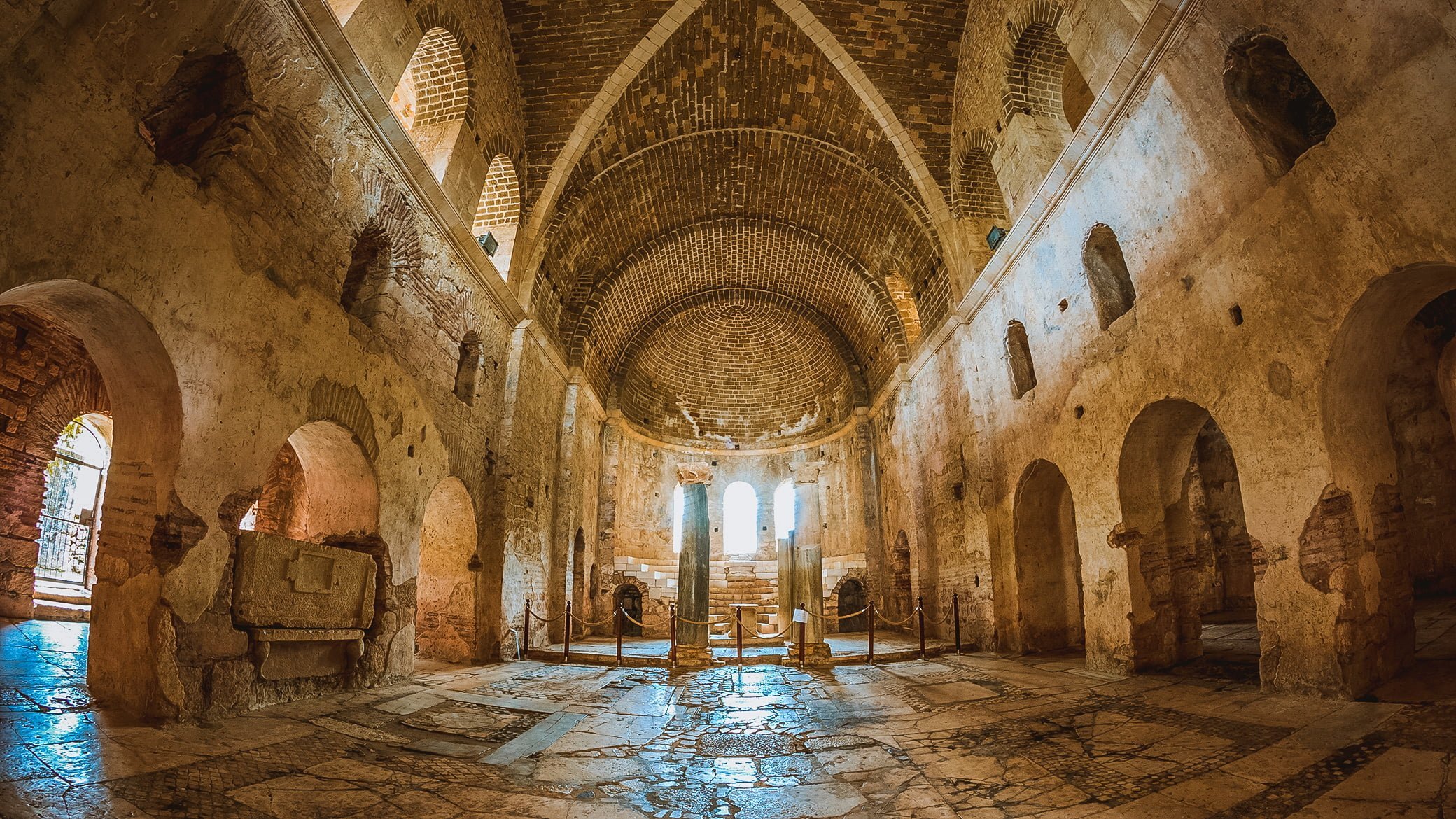
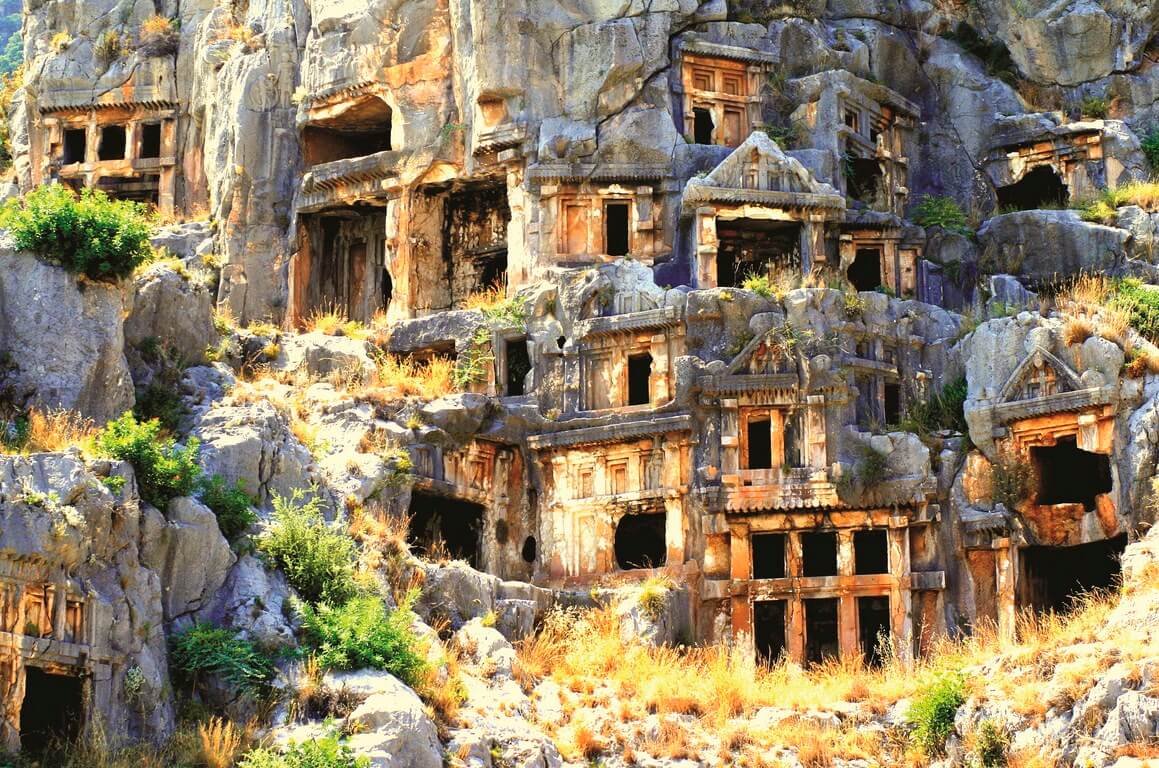
-2-
Ancıent Cıty Of Myra
The ancient city of Myra, located in and around today's Demre district center, was founded on the plain with the same name. The connection of the city to the sea was provided by the convenient canal to the west of the Myros river (today's Demre Stream). Maritime transportation and trade of the region was also carried out from the port of Andriake (Çayağzı) located on the other side of the canal. The Ancient City of Myra is especially famous for its Lycian Period rock tombs, Roman Period theater and Byzantine Period St. Nicholas Church (Santa Claus). Rock tombs, Lycian inscriptions and coins show that Myra has existed since the 5th century at least. According to the information given by Strabo, Myra, one of the six big cities of the Lycian League, is referred to as Myrrh in the Lycian inscriptions. There are embossed or flat rock tombs on both sides of the theater. The tomb with relief depicting the dead and their relatives is one of the most interesting examples in the Myra tombs, which are the best adapted examples of the Lycian wooden house architecture to the rock tombs. In addition, many rock tombs with reliefs or inscriptions are lined up on the south-facing side of the rock, one on top of the other or side by side.
Rock Tombs
On the way to the city center near the theater, the remains of the baths on the left of the road are early and interesting examples of Roman brick architecture. The city's water needs were met by channels carved into the rock on the side of the valley where the Demre Stream flowed. The fact that Myra, one of the 6 cities in the Lycian confederation with 3 voting rights, is called "the brightest city" shows how important it is. It is of particular importance that the mother goddess of the city, Artemis, was represented in the form of Cybele, the oldest goddess of Anatolia, in the coins minted with her own name, as well as the coins belonging to the Lycian confederation of Myra. The fact that Myra, the capital of the state of Lycia, was the city where St. Paul and his friends stopped, has a special importance in Christianity.
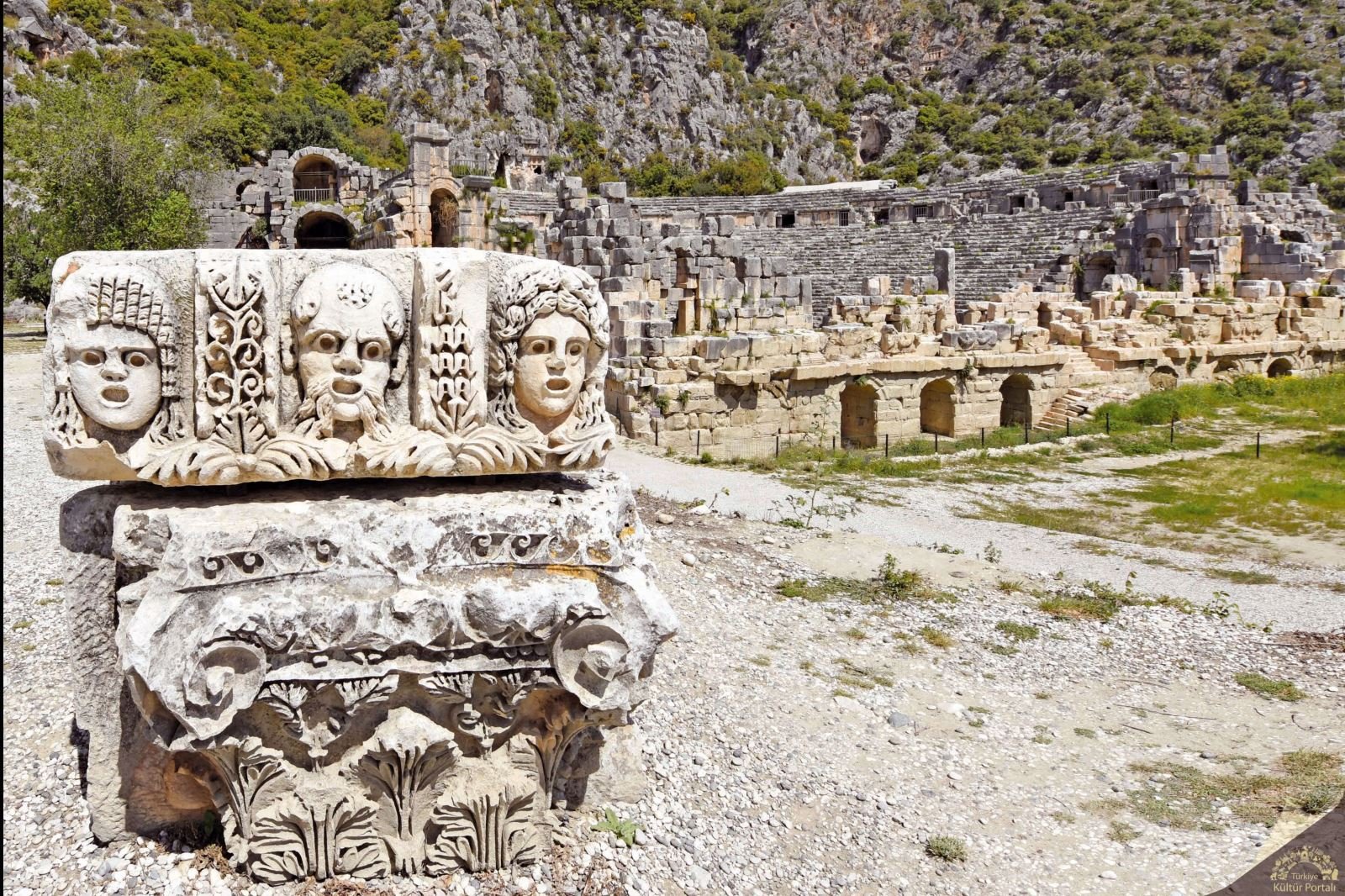
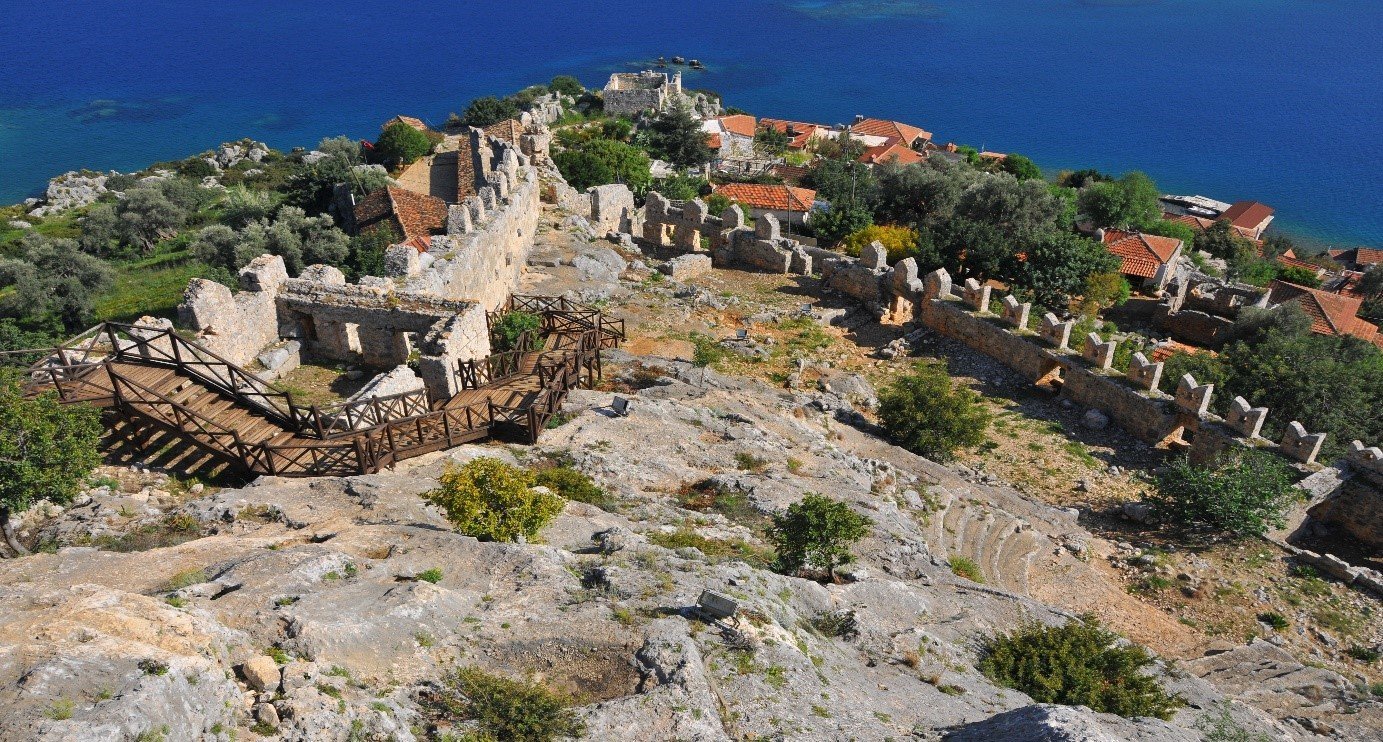
-3-
Üçağız-Kaleköy
Ancient Simena, known as Kaleköy today, is a small Lycian coastal city and is a strategic point that has been inhabited since the 4th century BC. The ruin that reflects this feature most vividly is the castle, which has remained intact until today, and it is possible to watch the most perfect views of Kekova and its surroundings. Simena is one of the rare settlements in Turkey that can only be reached by sea. The ancient city of Simena, located within the Kekova Special Environmental Protection Area covering an area of 260 km², is registered as a 1st degree archaeological site. Kekova, which gave its name to the region, is the general name of the region that includes Simena, Teimiussa (Üçağız), Aperlai (Sıcak) Pier, Aquarium Bay, Gökkaya Bay. The northern shores of the island facing Simena is full of traces of civilization, such as stone stairs, house ruins, pier ruins that was partially submerged in the sea, a cause of earthquakes in ancient times.
-4-
Lycıan Cıvılızatıons Museum
The museum is located in the ruins of Andriake Harbour of the ancient city of Myra, which is among the five largest cities of Lycia in Demre, Antalya. The museum building which was built as a granarium (granary) in 129 AD is itself a significant part of the Lycian history as well as the displays unearthed at the excavations of Lycian cities. Each artefact in the museum’s collection gives clues about the religious beliefs, economic and social lives of the Lycians. The museum halls are named after the cities of Myra, Patara, Xanthos, Tilos, Pınara, Olympus, Arykanda and Antiphellos which constitute the Lycian League.
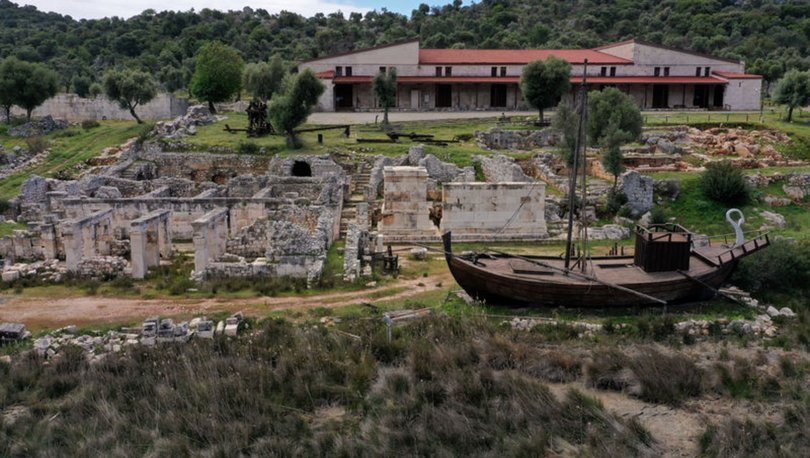
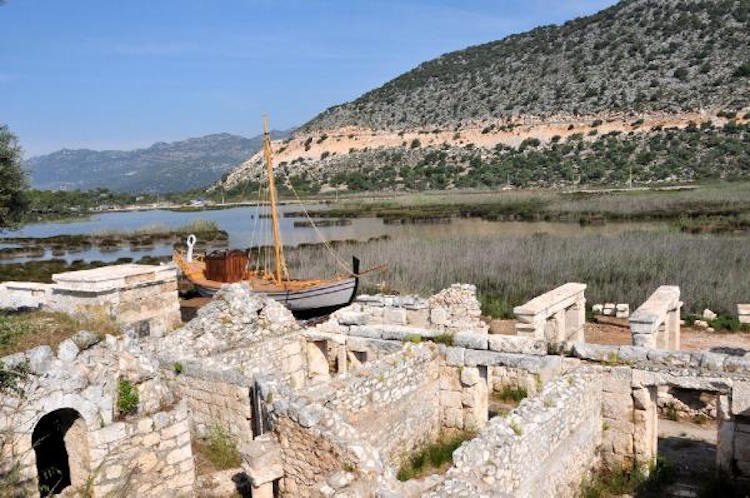
Watching the informative video about the Lycian Civilisation will make the museum visit more appealing and interesting. In the open air section of the museum are the remains of the harbour, bazaar, public bath and church, all of which were unearthed at the excavation works which continued for long years. A Roman merchant ship, built in accordance with the original, attracts the attention of all visitors and the place setting, showing how goods were brought to the harbour in Anciat Age times, takes them on a journey in time A Unique Culture In Anatolia: Lycian Civilisation As the cradle of civilisations, Turkey has hosted many great civilisations throughout its history. One of these is the Lycians who were renowned for their devotion to freedom and democracy. Known to have been the first to have established a federal system, the Lycian Civilisation is regarded as the most unique culture in Anatolia and differs from the ones before and after it in history. They had their own art style and their own language which is still not completely understood. Named by the Hittites as Lukka (the Land of Lights), the Lycian lands is located on a peninsula between Antalya and Fethiye, in the southwest of Turkey. The visitors will certainly understand why the Lycians are so attached to their freedom, while discovering the traces of their cities built on a steep rocky area. The most remarkable artefacts in the region are the Lycian rock tombs reflecting their wooden structures. For the Lycian people, the tombs were so important that they enacted laws to protect their tombs and even created a council which is called ‘minti’. The greatest contribution of the Lycian Civilisation to humanity is that they have implemented the earliest example of today’s democratic systems. The Lycian League, which was formed by bringing together 23 cities in the first century BC, is considered the first democratic formation in history. Another important aspect of the region is that the Lycian people lived here until they disappeared from history. For keeping the memories of the Lycians alive, the Ancient Cities of the Lycian Civilisation are included in the UNESCO World Heritage Temporary List thanks to their historical importance and originality.
-5-
Sülüklü Beach
Sülüklü beach, which is completely sandy, is a wonderful playground for children thanks to its shallow water that gradually deepens.
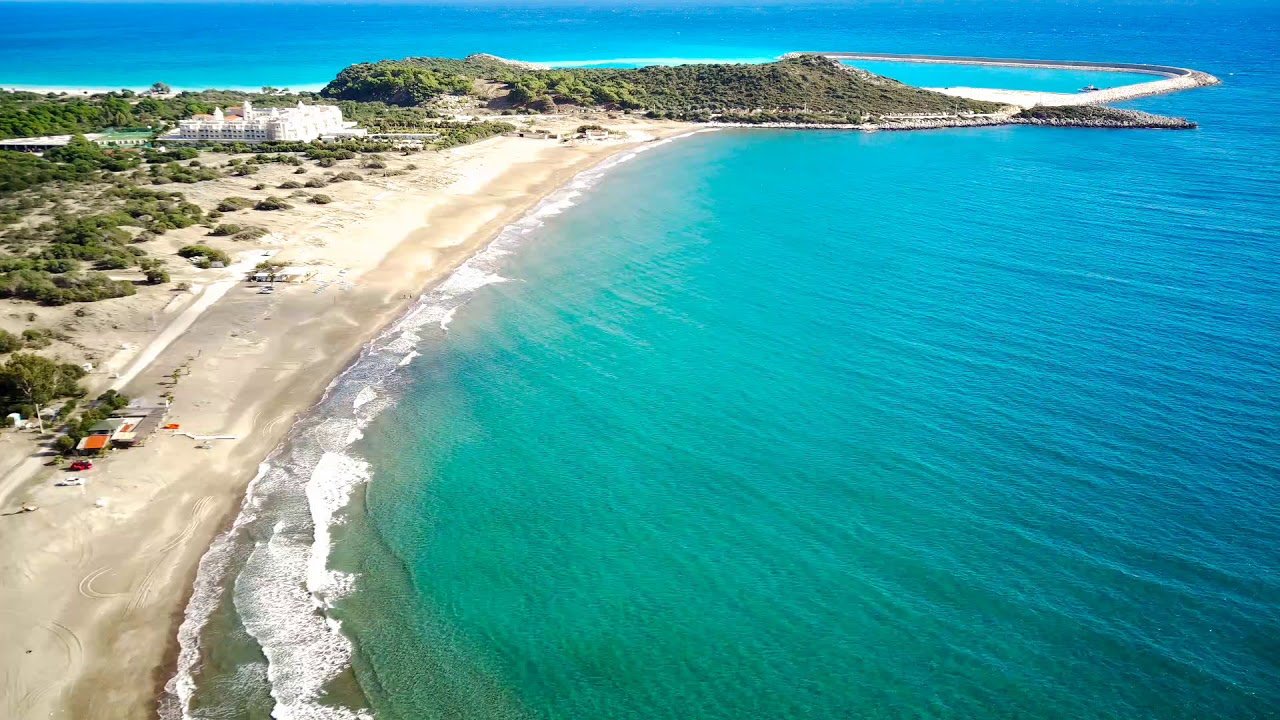
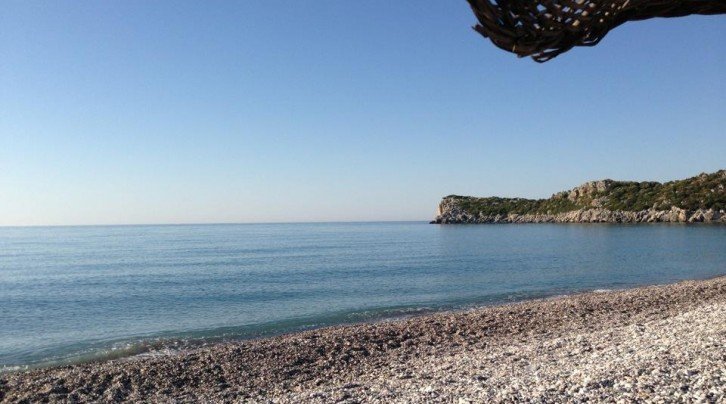
-6-
Taşdibi Beach
It is the most demanded beach in the region with its crystal clear water without waves. It has a pebbly structure, the water deepens 1-2 meters after entering the sea.


